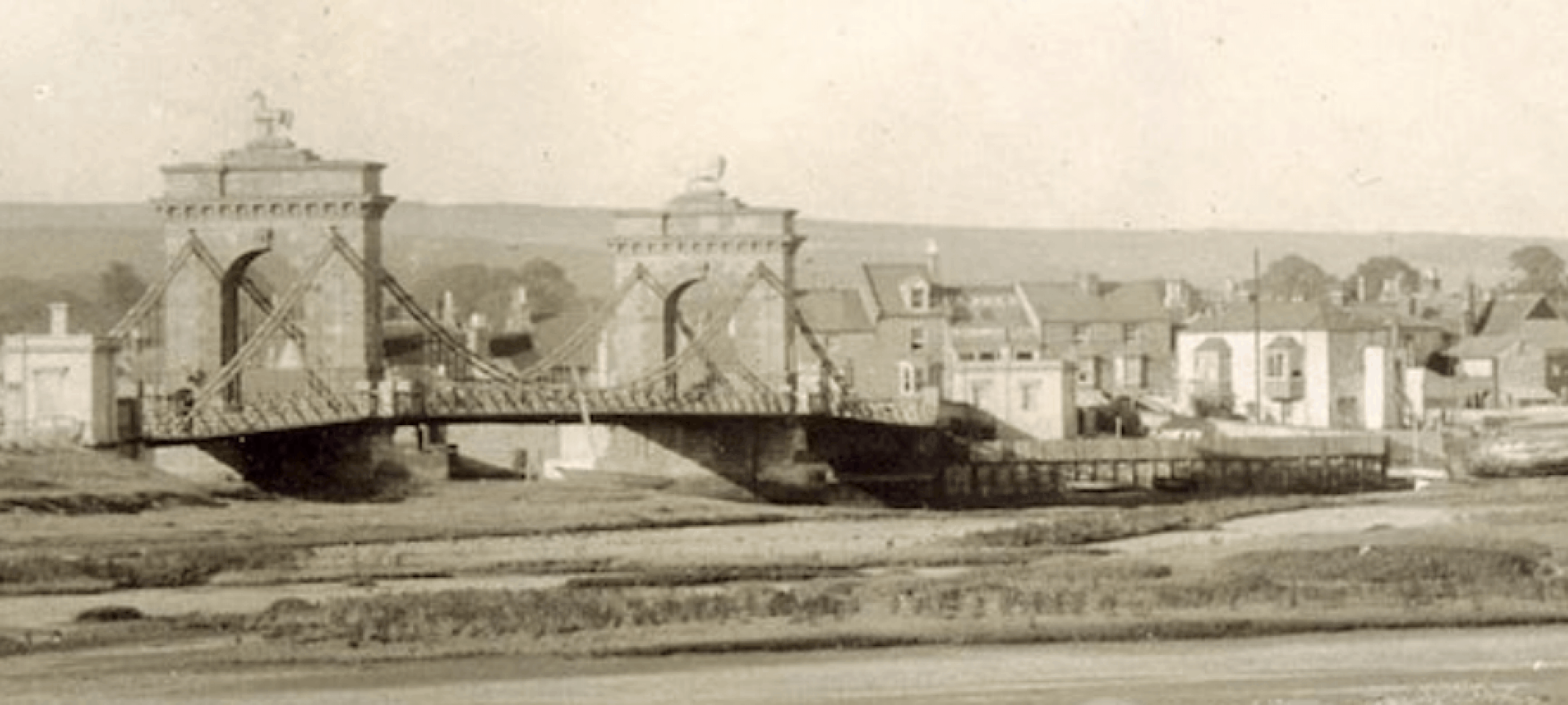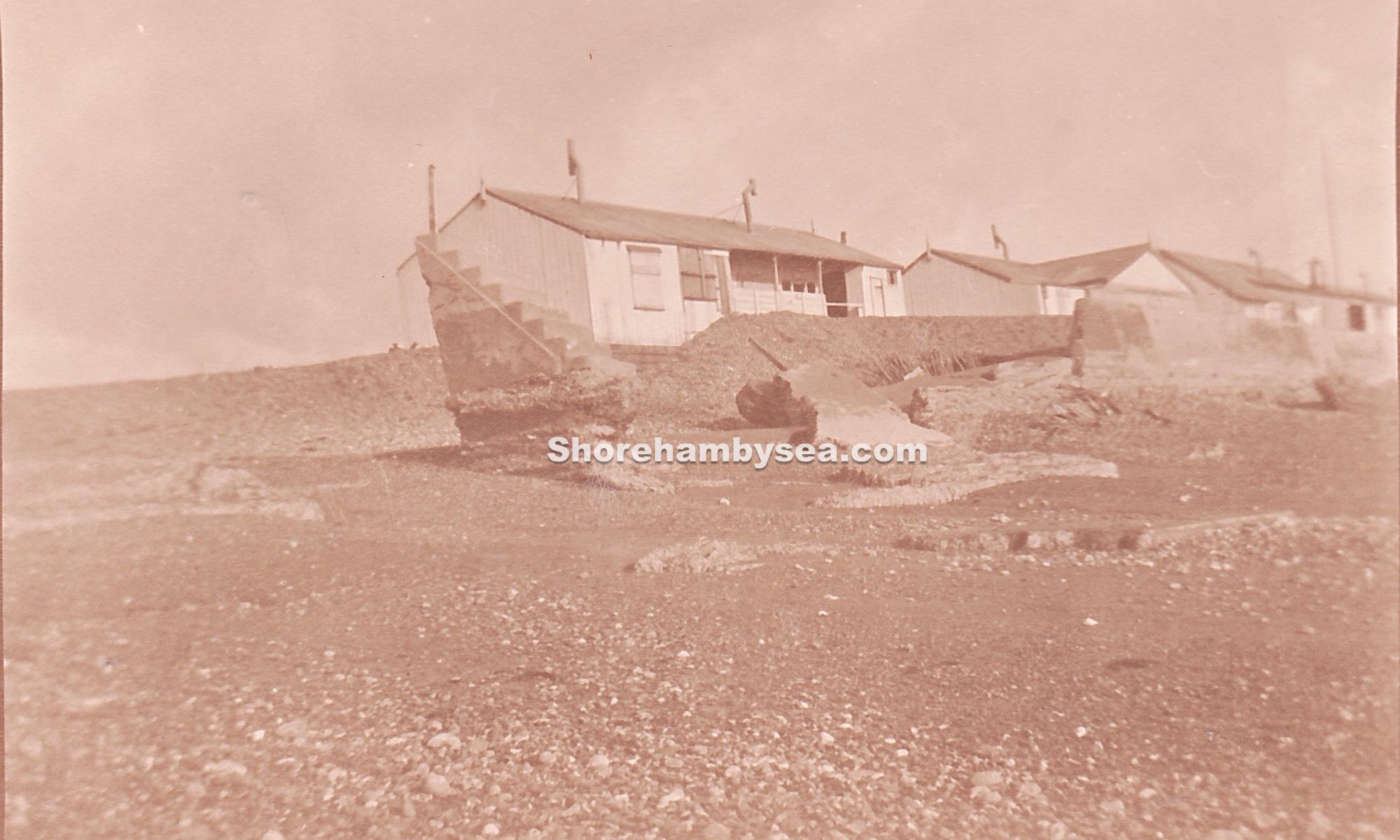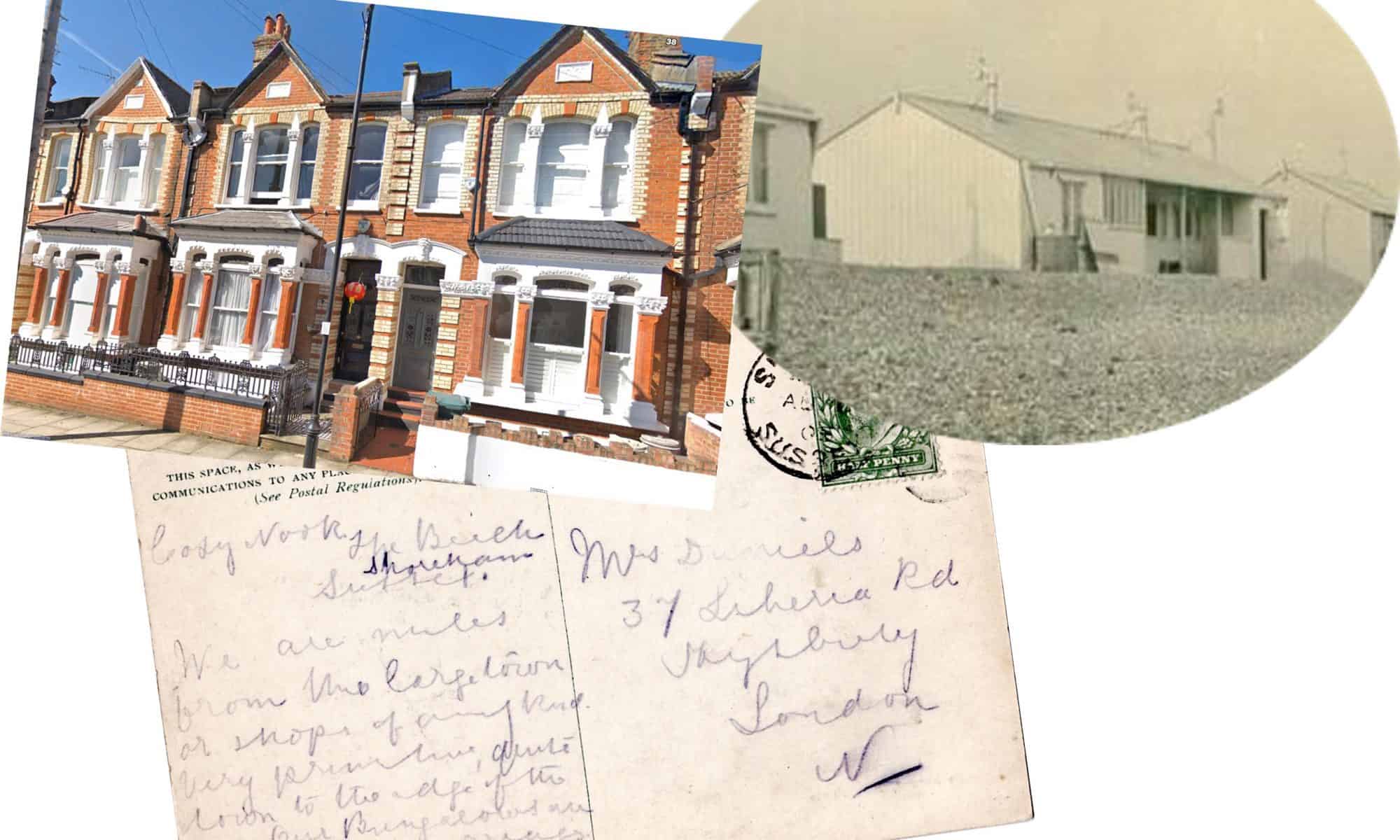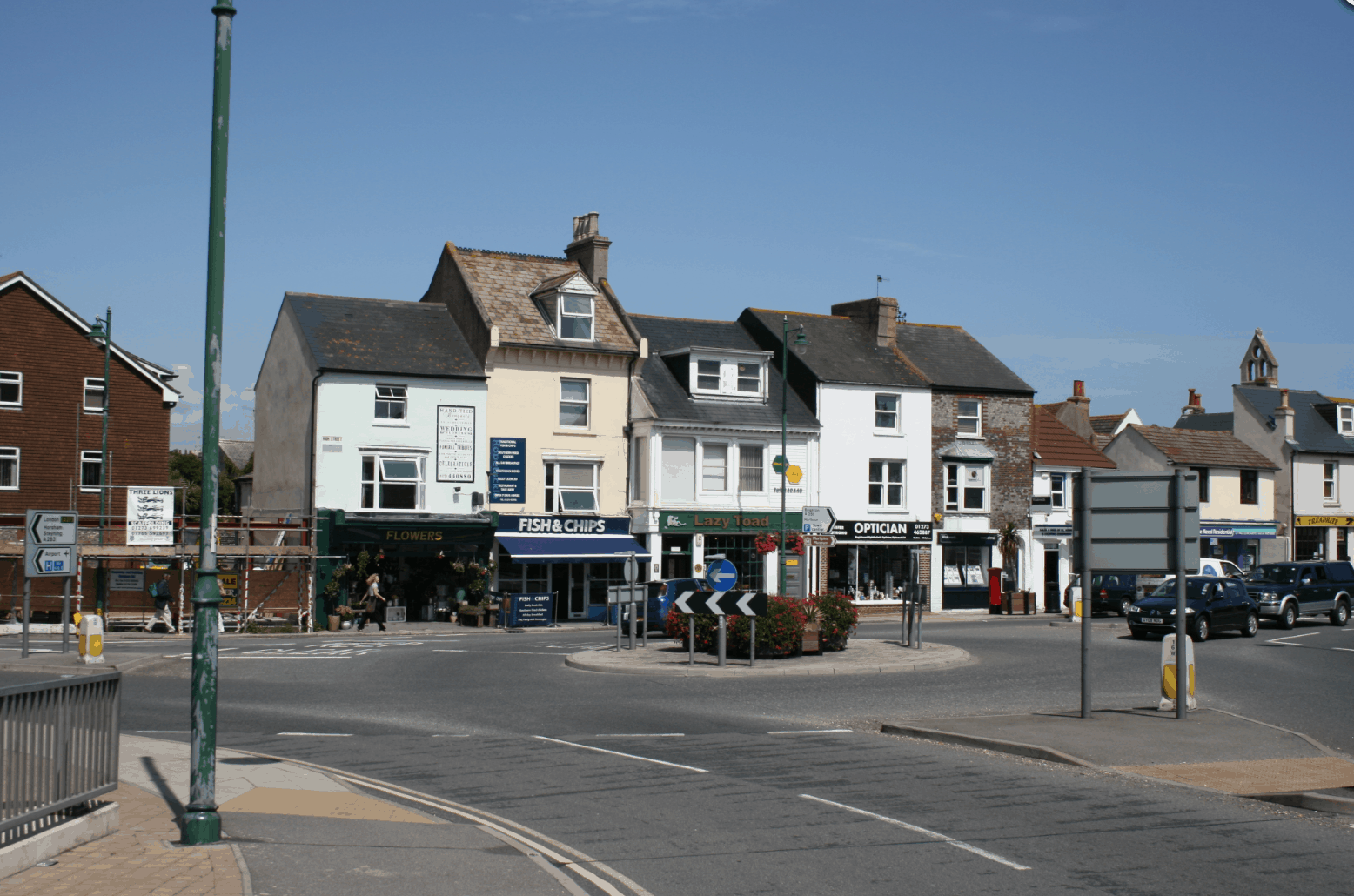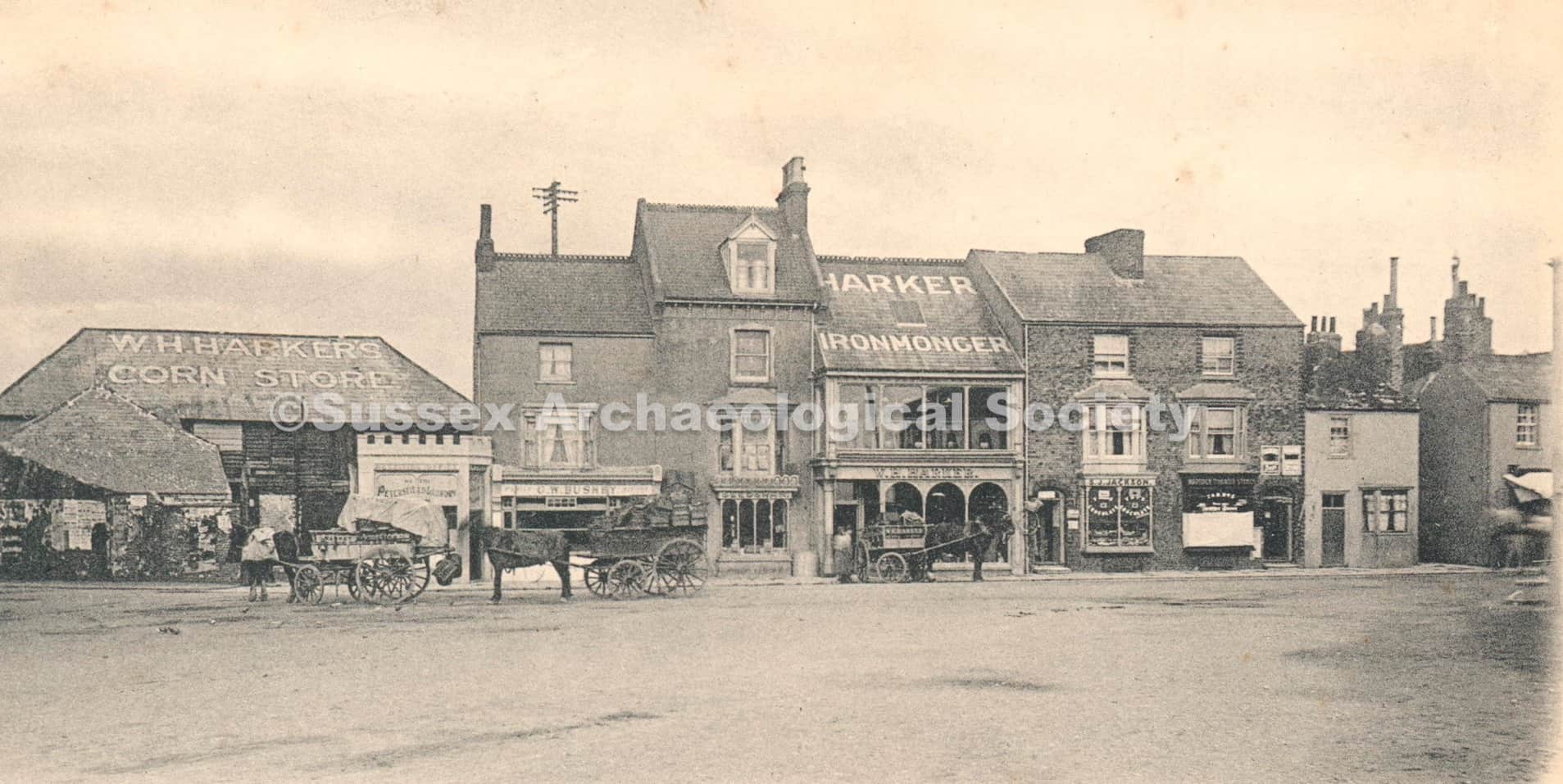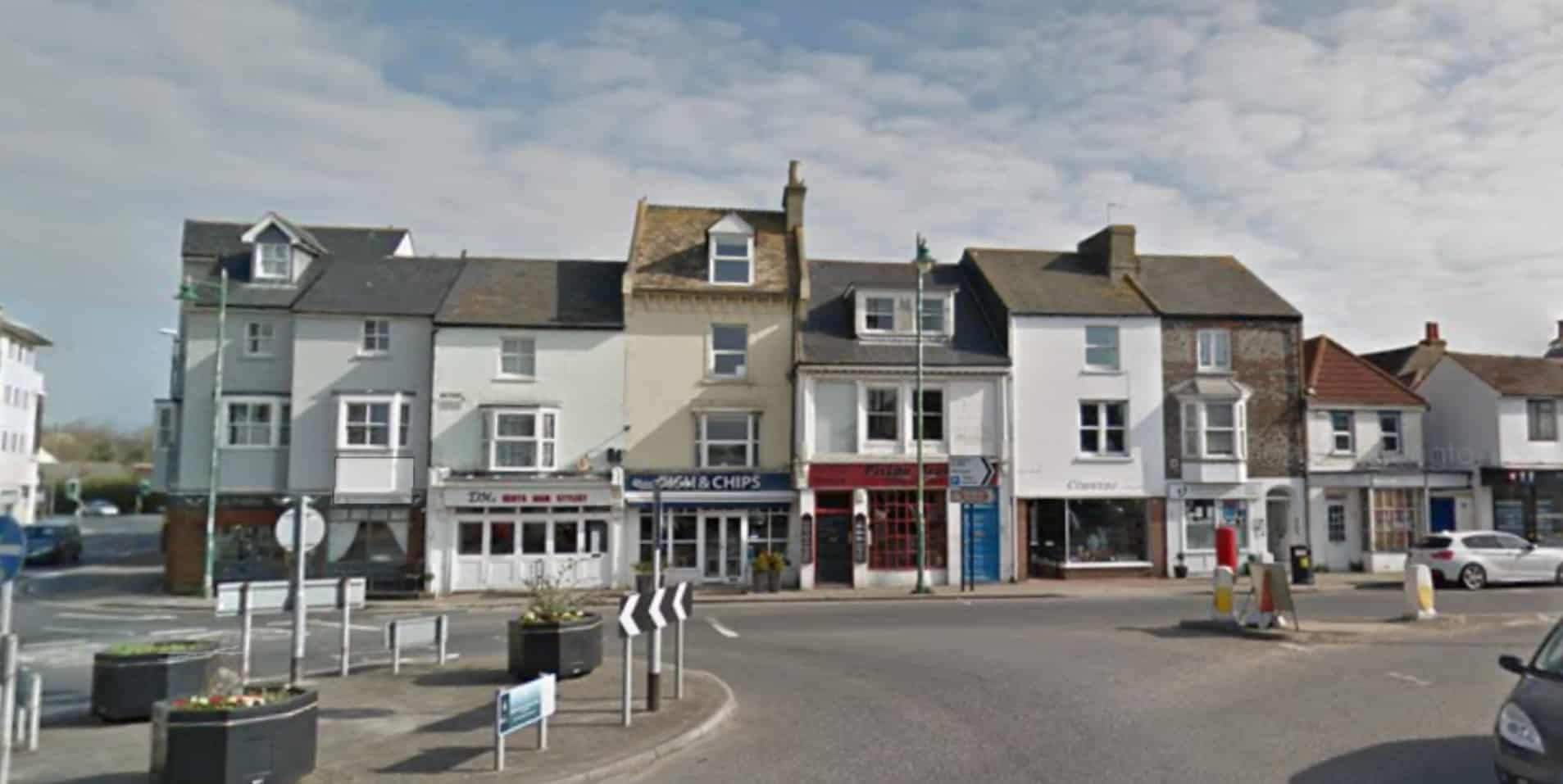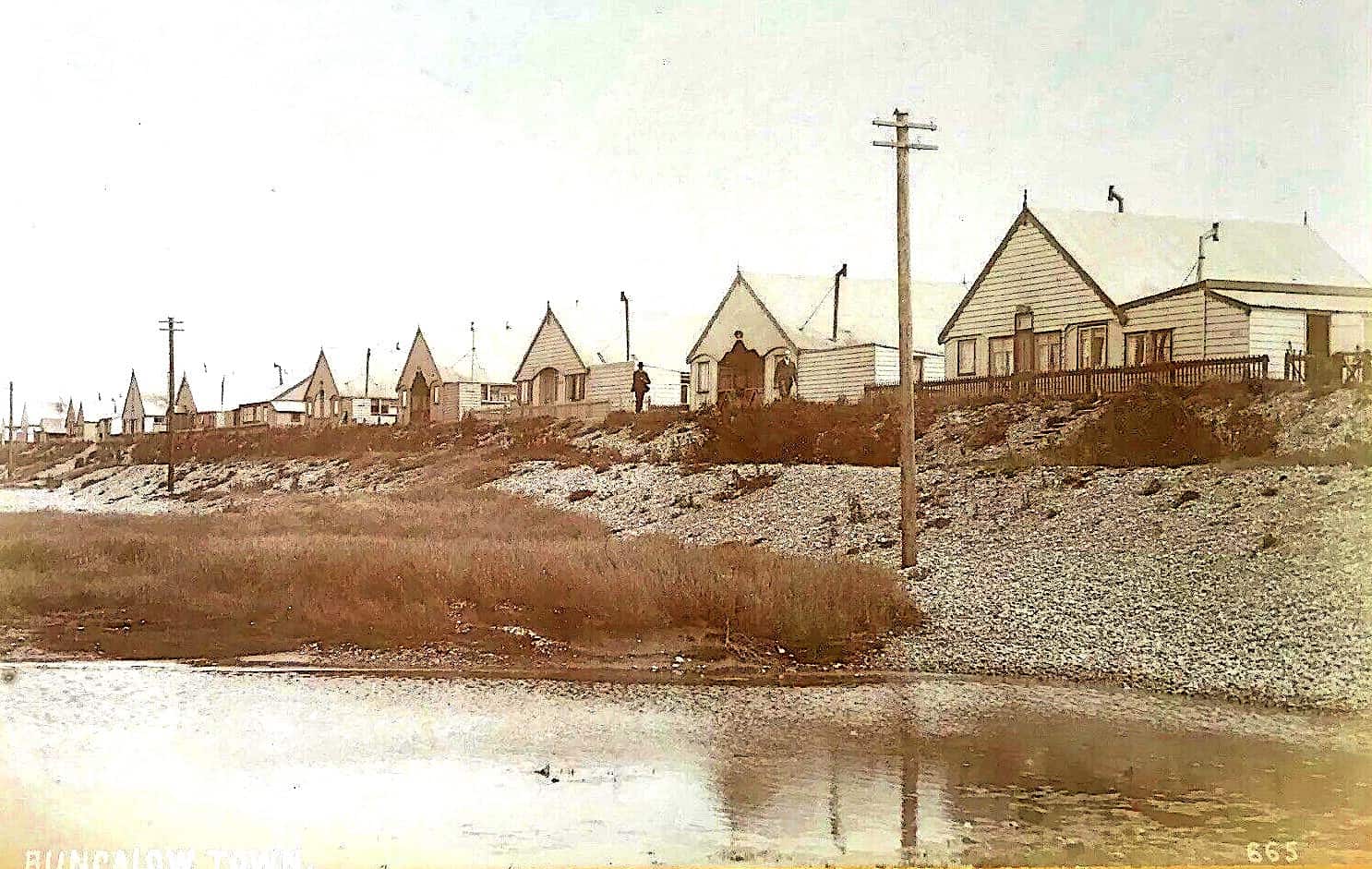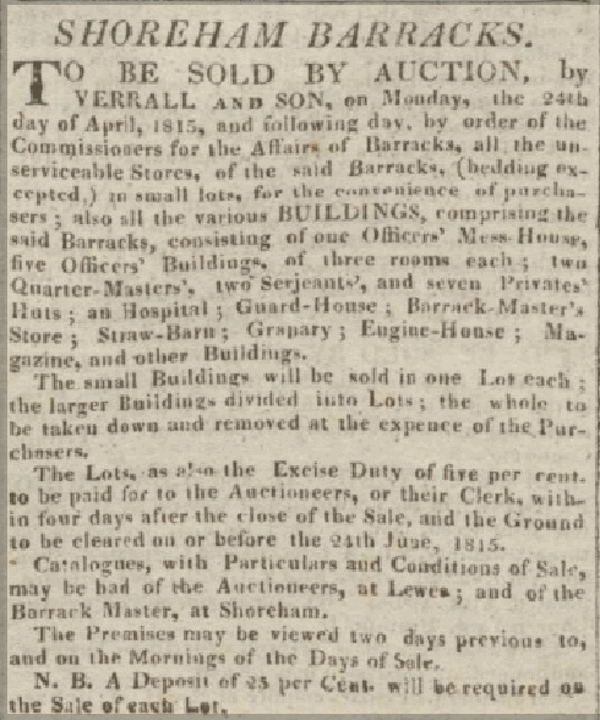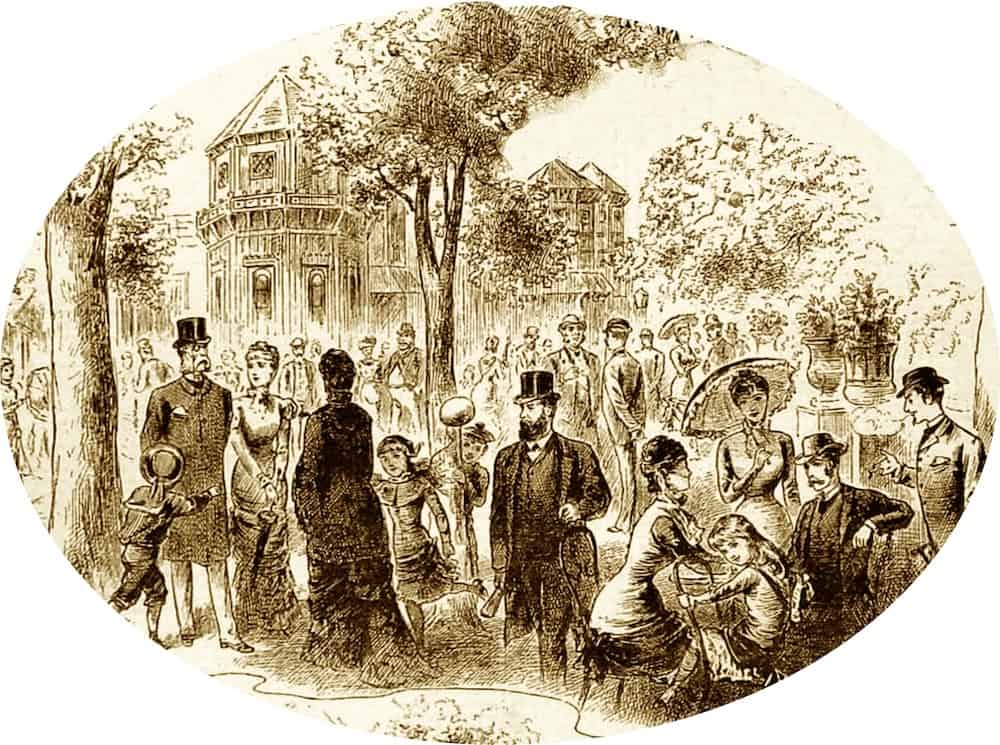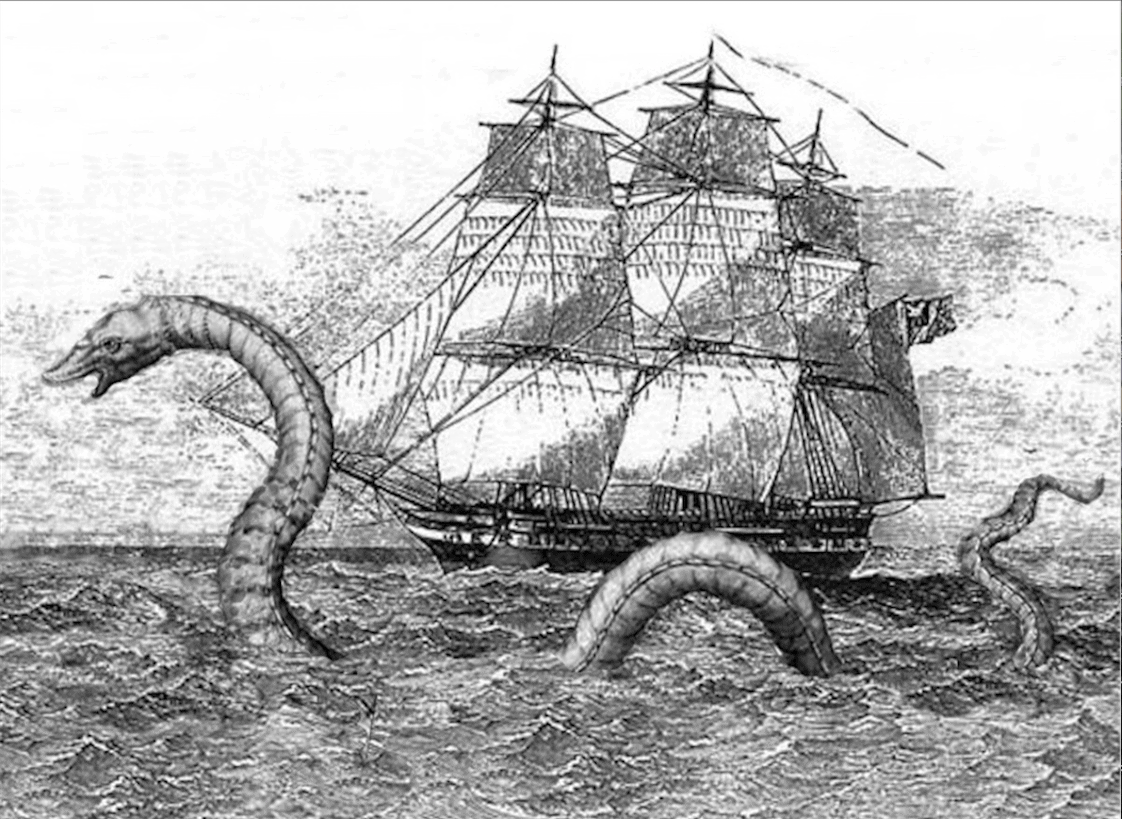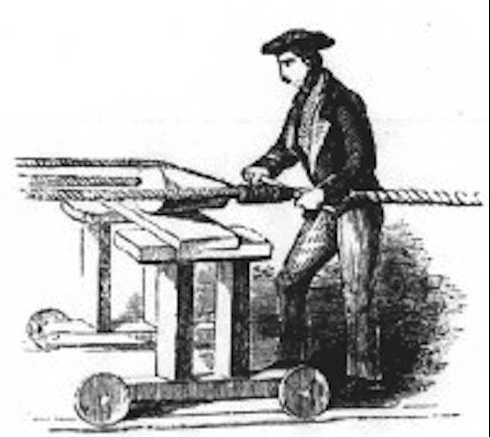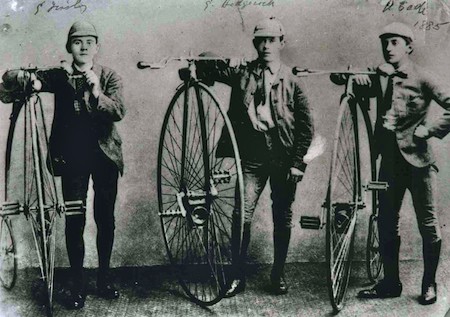A successful bid for a set of 1913 storm-damaged bungalows on the beach provided a bit of a challenge as none of the bungalows in them were identified. An extensive trawl through our collections eventually matched them all and even managed to identify a long standing mystery bungalow that by coincidence stood close by!
You’ll see what we mean:- http://www.shorehambysea.com/catty-brown-and-framnaes/
Cosy Nook – Widewater
A bit of a coincidence this – looking through some of our collections and found a postcard from a Nelly Bayle to Mrs Daniels in Highbury. Nelly was staying at Cosy Nook in August of 1908, one of the bungalows that was damaged in the 1913 storm described in the earlier Catty Norman article and gives us a different take on the accommodation compared to the glowing compliments usually seen in postcards home. The lady doesn’t seem too impressed with Cosy Nook nor it’s ‘old carriages’ and you have to admit it did look quite plain. For her it was miles from anywhere and located as it was near the centre of Widewater beach I suppose it would have been a fairly long walk to a sufficient number of shops at Shoreham town or Worthing the other way. She thought it ‘very primitive and quite down to the edge of the sea’ – something of a prophetic remark bearing in mind the subsequent storms.
37, Liberia Road was part of quite an attractive neighbourhood so perhaps Nelly was used to better things but of course she may not necessarily have lived there………. servant or companion perhaps? you could go on forever wondering couldn’t you!
High Street 10 years on
2009 was the first part of the High Street Photo project to record the shop fronts of every shop.
http://www.shorehambysea.com/street-photo-project/high-street/
Is the High Street a better place 10 years on? Anyone fancy doing the same for 2019?
As for 100 years ago, this then and now slider demonstrates the evolution of the West End.
Doomed Bungalows on Widewater
Eau-de-Cologne fountains and half a cat! – Indian Temple
A fascinating response to our article on Southwick’s Indian Temple http://www.shorehambysea.com/southwicks-indian-temple/ from Miranda Bowen nee Sweet who lived there in the 1960’s and well worth including here:-
‘My family moved into Ivy lodge in 1955 and I lived there until my marriage in 1967. My Mother and Father continued living there for several years afterwards. I remember digging up colourful mosaic tiles from the back garden and was told that these must have belonged to the remains of the foundations of the Indian Temple. There was an eau-de-Cologne fountain under the floor boards of the ‘long room’ in Ivy Lodge. This was circular and also mosaic with Eastern influences. The reservoir was still in the cellar when we lived there. The present owners who bought the house from us may or may not know of its existence.
Ivy Lodge was haunted by several notables. An elderly gentleman, a little girl and half a cat. (The tail end). Other apparitions were seen or felt by my family and we became quite used to them. It all made for a colourful childhood. MB’
Did you know? – part 9
Did you know….. that during the Napoleonic invasion scares Shoreham’s largest barracks was between Southdown Road and Ravens Road consisting of an Officer’s Mess House, five Officers’ Buildings of three rooms each; two Quarter-Masters’, two Sergeants’ and seven Privates’ Huts; an Hospital; Guard House; Barrack Master’s Store; Straw Barn; Granary; Engine House; Magazine and other Buildings.
Did you know? – part 8
….. that Shoreham’s Swiss Gardens was once a famous and well attended attraction.The biggest attendances were achieved when societies, clubs and companies organized their annual functions there. The southern arm of the Manchester Unity of Oddfellows held their annual fetes at the gardens often amounting to 4,000 visitors (1852). In 1856 Messrs.Truman and Hanbury the owners of the London brewery, the largest in the world then, hired a complete train from the capital to Shoreham for their workers, their wives and sweethearts.
Did you know? – part 7
…. that in April of 1856 Captain Guy of the ‘Imogen’ arrived at Shoreham from a voyage that took them through the Azores where, he stated, he and his crew saw a large sea serpent – “The creature was in view for a full 35 minutes …. and had the same appearance that I have before seen represented in drawings but without the hairy mane and more like a large conger eel. It was a full forty feet long above water and from the wake it left I would say sixty feet would not be an exaggeration.”
Did you know? – part 6
Did you know…. that the Tillstone family’s sail and ropemaking business during the 18th century stretched their ropes from West Street up to, and through Ropewalk. During their manufacture the ropes were stretched, twisted and tarred from the winding house and winches, up to the top of the Ropewalk where there were similar winches or capstans – for anyone working there or walking by the shouts of the workers, the creak of the winches, ringing signal bells and the pervading smell of tar must have left a strong impression on the senses.
(see http://www.shorehambysea.com/1400-2/ )
Did you know? -part 5
Did you know….. a penny farthing cycle race to Bramber Station and back on 10th July 1888 was won by Arthur Eade (of the Eade’s Stores family). This photo three years earlier shows three members of the newly formed Shoreham Cycling Club:- George Tinsley, a blacksmith; George Hedgecock who later ran a successful bootmakers/shoe shop in East Street; and Arthur Eade
